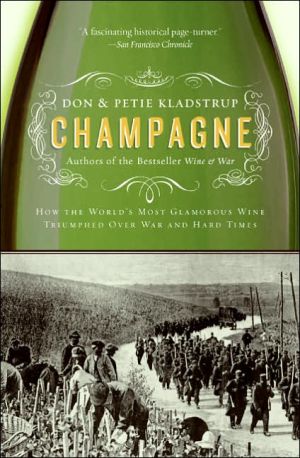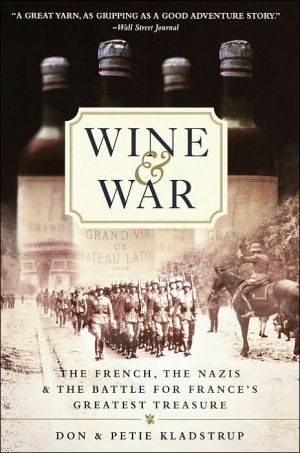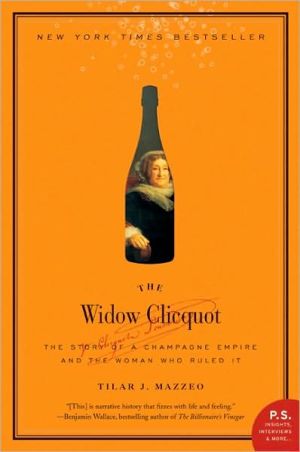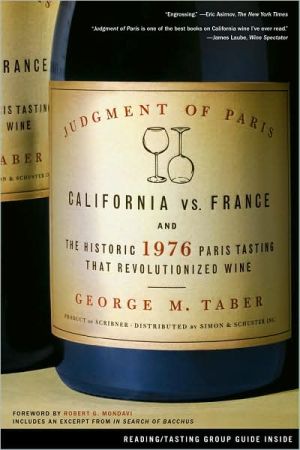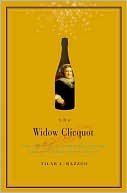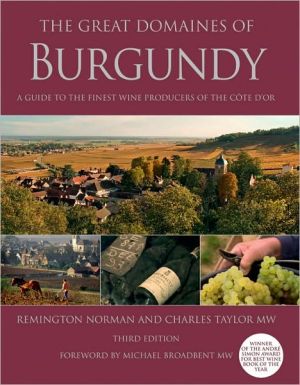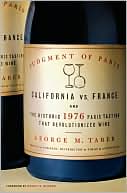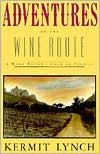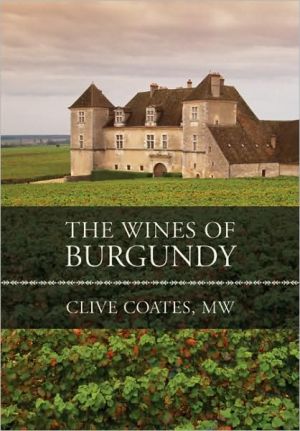Champagne: How the World's Most Glamorous Wine Triumphed over War and Hard Times
Throughout history, waves of invaders have coveted the northeast corner of France: Attila the Hun in the fifth century, the English in the Hundred Years War, the Prussians in the nineteenth century. Yet this region – which historians say has suffered more battles and wars than any other place on earth – is also the birthplace of one thing the entire world equates with good times, friendship and celebration: champagne.\ Champagne is the story of the world's favourite wine. It tells how a...
Search in google:
Throughout history, waves of invaders have coveted the northeast corner of France: Attila the Hun in the fifth century, the English in the Hundred Years War, the Prussians in the nineteenth century. Yet this region – which historians say has suffered more battles and wars than any other place on earth – is also the birthplace of one thing the entire world equates with good times, friendship and celebration: champagne.Champagne is the story of the world's favourite wine. It tells how a sparkling beverage that became the toast of society during the Belle Epoque emerged after World War I as a global icon of fine taste and good living. The book celebrates the gutsy, larger–than–life characters whose proud determination nurtured and preserved the land and its grapes throughout centuries of conflict. New York Newsday “Compelling… a lovingly written ode to this incomparable, festive wine.”
Champagne\ How the World's Most Glamorous Wine Triumphed Over War and Hard Times \ \ By Don Kladstrup \ HarperCollins Publishers, Inc.\ Copyright © 2005 Don Kladstrup\ All right reserved. \ ISBN: 0060737921 \ \ \ Chapter One\ \ The Monarch and the Monk\ \ They were born the same year and died the same year, and yet, they could not have been more different. One lived in absolute luxury, the other in abject poverty. One prided himself on his long, curly locks, the other shaved his head. One wore red high heels, the other simple sandals. One garbed himself in silk and velvet, the other in rough brown linen.\ But Louis XIV and Dom Perignon had one thing in common: both loved champagne, or, more precisely, the wine that would become champagne. Despite their differences, no two individuals did more to launch champagne on its path to fame and glory.\ In the beginning, however, there was no such thing as champagne. Champagne was not a wine; it was a place, a region known mainly for fine, quality wool. If peasants had extra land, they sometimes planted vines and made wine to supplement their diets or earn extra income. Because that wine was so insignificant, it didn't even have a name. Instead, it was lumped in with other wines as "vins de l'Ile de France" or sometimes just "vins Francais." Other times, it was labeled by the town or area it came from, such as "vins de Ay," "vins de la montagne," or "vins de la riviere." One thing it was never called was "champagne."\ Also, it was red, but not dark red. It was pale, more onionskin in color, a variable pinkish brown which people described as oeil de perdrix, or partridge's eye.\ More significant, there were no bubbles -- not intentional ones, at least. Bubbles were considered a fault, something that ruined the wine and was to be avoided.\ Although the Romans had begun planting vines and making wine in Champagne around 57 B.C., it wasn't until the eleventh century that anyone outside the region paid much attention. That was when the son of a vigneron from Chatillon-sur-Marne was elected to the papacy, assuming the name Urban II. The new Pope did much to promote the wines of his native land, letting it be known that he "preferred them to all others." 1 (It was an open secret in Rome that the best way to gain an audience with His Holiness was to arrive with a quantity of wine from Champagne.)\ But there was something else the Pope did that enhanced the reputation of the region's wine even more: He launched the Crusades.\ Champagne was a patchwork of warring fiefdoms whose leaders kept the province in constant turmoil. There was no central authority; some people were loyal to the king, others paid homage to the Duke of Burgundy, while still others owed their allegiance to the emperor of Germany. Some, who had bits of property scattered around the area, could find themselves paying homage to as many as five or six different overlords.\ This tangle of allegiances led to so much upheaval and destruction that the Church was finally moved to appeal for a "Truce of God," which forbade fighting during religious festivals, Holy Days, and on Sundays. Thus were weekends born.\ Weekends, however, did little to bring an end to the turmoil. Rather than continue trying to restrain it, the Church opted to direct it for its own purposes.\ In 1095 Pope Urban declared, "Let those who until now have been moved only to fight their fellow Christians now take up arms against the infidel." With those words, the First Crusade began. His call for a holy war struck a particularly responsive chord with his fellow Champenois, as warlords and others put aside differences and set off for Jerusalem, accompanied by their armies and retinues.\ For the first time in generations, an atmosphere of calm descended over the region. Emptied of feuding factions, Champagne was transformed into an "island of peace," 2 capable of profiting from its location at the crossroads of Europe's two major trade routes. One ran east-west between the Frankish and Germanic kingdoms; the other extended from the North Sea to the Mediterranean. These routes made Champagne a natural center for commerce and helped spawn huge annual trade fairs, events that went on for weeks and attracted merchants from throughout the continent. There was lace from Holland, blankets from Belgium, furs from Russia, leather and gold from Italy, fine steel blades from Spain, oils from the Mediterranean, and wool and linen from France.\ But not wine. The wines of Champagne were produced for local consumption and in such small quantities that even local needs often couldn't be met. Offering wine for sale or trade at fairs was out of the question. Merchants wanting wine to take home had to travel to Burgundy, a difficult journey that took at least a week.\ By the 1200s, that began to change. Wool producers from Champagne, who made a bit of wine on the side, came up with a novel idea. To entice trade-fair visitors to buy their wool, they decided to provide free wine as well.\ The promotions worked better than producers dared hope. Not only did they sell more wool, but they also began receiving orders for wine. Within a short time, wine had overtaken wool as the major product of the region. Although most buyers felt it necessary to "baptize" the wine before drinking it, diluting it with water because it was rather rough, they still found it agreeable. Best of all, it was cheaper than wine from Burgundy.\ The Crusades, however, did more than provide a peaceful interlude in which Champagne could exploit its location at the crossroads of two trade routes. They also spurred the expansion of Champagne's vineyards. Because crusading was astronomically expensive, knights, nobles, and other landowners authorized peasants to plant more vines and make more wine to help finance their expedition. They also drew up wills. Hoping to ensure their salvation, the holy warriors stipulated that if they failed to return from the Holy Land, part of their property -- including vineyards -- would go to the Church. Many did . . .\ \ Continues...\ \ \ \ Excerpted from Champagne by Don Kladstrup Copyright © 2005 by Don Kladstrup. Excerpted by permission.\ All rights reserved. No part of this excerpt may be reproduced or reprinted without permission in writing from the publisher.\ Excerpts are provided by Dial-A-Book Inc. solely for the personal use of visitors to this web site. \ \
\ From Barnes & NobleThe history of champagne and the history of France are inextricably linked. Just as the fields of Champagne served as battlefields in both world wars, the revered vintages of the region's vineyards have stirred fierce wars and nationalistic displays. Don and Petie Kladstrup previously chronicled French "wine patriotism" during WWII in Wine & War; now they pour out a fascinating account of the world's favorite wine, in a narrative that includes appearances by King Louis XIV, Dom Perignon, and Napoleon Bonaparte.\ \ \ \ \ New York Newsday“Compelling… a lovingly written ode to this incomparable, festive wine.”\ \ \ New York Newsday on Champagne“Compelling… a lovingly written ode to this incomparable, festive wine.”\ \ \ \ \ Kirkus ReviewsChampagne is champagne because it comes from Champagne. But there's much more to it than that, as the wine-loving Kladstrups (Wine & War, 2001) document in this sometimes fizzy portrait of the bubbly. Faux naivete may be at play when, by way of opening, the Kladstrups let drop the hint that they were shocked to learn that the Great War was horrific; that certainly isn't news to the people of France's much-fought-over Champagne region. That four-year conflict proves central to the authors' account of how bubbly survived the odds to become a drink known around the world-and to become an ever-rarer commodity in parts of it, as when Cristal went from selling 600,000 bottles a year at the beginning of WWI in St. Petersburg alone, "exclusively for the czar," to selling nothing in Russia after the Revolution, nearly bankrupting the house of Roederer. Closer to home, the war threatened to destroy some of France's most productive vineyards, which previous wars had destroyed many times over since the days of the Roman conquest and Attila. The Kladstrup's travelogue, real and metaphorical, through the Champagne region-battles over which were waged by French bureaucrats and boosters, too, as to just what the region comprised and who was entitled to use its "controlled denomination"-gets a little almanac-like at times, lending a sort of everything-you-ever-wanted-to-know-about feel to the enterprise. Still, there's good history to be found here, and plenty of treasures in that surfeit of facts and trivia; the authors' account of a drunken German retreat at the beginning of WWI is a standout, as is their minibiography of the since-appropriated Dom Perignon, who didn't really invent champagne-"itinvented itself"-but still deserves glory for his work in raising the global quality of life with his exquisite blends of potent grape juice. Not the definitive history of champagne, but a pleasing contribution, to be read over a mimosa or a magnum.\ \
